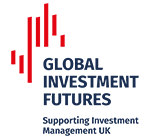
Year in Review 2022 - A Retail Market Overview
2022 was a challenging year for the funds industry, characterised by significant changes in both the investment environment and investor behaviour. A combination of asset depreciation and outflows resulted in a £219 billion (14%) annual fall in funds under management to £1.37 trillion by the end of 2022. Asset depreciation hit both equities and bonds, following a period of strong growth during the Covid pandemic when funds under management had grown a combined 21% over the two years to the end of 2021. The change in the investment environment through 2022 was primarily driven by the shift in monetary policy to combat rising inflation. In the UK, the Consumer Price Index (CPI) inflation measure doubled over the year rising from 5.4% at the end of 2021 to 10.5% by the end of 2022. In the USA, whilst inflation rose through the first half starting at 7.0% at the end of 2021 before peaking at 9.1% in June, it had fallen back to 6.5% by the end of 2022. Despite the fall, inflation remains well above the Federal Reserve’s 2% inflation target.
The Russian invasion of Ukraine in February 2022 further added to existing inflationary pressures as the spot price of natural gas soared to a high of £3.56 per therm in August 2022, and although prices declined to £1.38 by the end of the year, they remained significantly above the pre-pandemic level of roughly £0.25 per therm.
To combat rising inflation, central banks globally began raising rates through the year following over a decade of near zero interest rates. The Bank of England was among the first central banks of the major economies to do so at the end of 2021, albeit more incrementally than the Federal Reserve, and subsequently raised interest rates 8 times in 2022 with rates rising from 0.25% to 3.5% at the end of the year. High inflation is traditionally a by-product of an overheating economy and raising interest rates acts to cool the economy down but the factors behind rising inflation in 2022 are complex and the health of post-pandemic economies fragile. While central bank rate rises are a necessary tool to combat rising inflation, from the perspective of investors in both equity and fixed income markets, each rate rise stoked fears of further hikes and with it concerns about recession risk.
Investors have been navigating a series of challenging and interlinked forces: recession fears, political instability nationally and overseas and market volatility, in addition to grappling with rising food, energy and mortgage repayments. Retail investors withdrew capital from funds over the year totalling £25.7 billion. This is in stark contrast to the previous two years, which saw close to record inflows of £30.8 billion and £43.6 billion in 2020 and 2021 respectively. For the first time, the IA has recorded an annual outflow from funds – the previous lowest annual sales total was £4.2 billion in 2008, at the height of the Global Financial Crisis. In 2022, both major asset classes – equity and fixed income funds – suffered performance related losses.
Bond funds were the hardest hit by changing economic conditions at the beginning of the year, with first quarter outflows of £6.0 billion the highest on record, beating the £4.8 bn withdrawn in Q1 2020. The rapid increase in interest rates caused yields to rise sharply and bond prices to fall, which hit bond fund performance. As interest rates rose and the markets continued to expect further interest rate rises, this meant that the existing fixed interest rate paid by bonds became less attractive to investors. By November, better than expected inflation data emerged in some countries, including the US, with the Fed signalling a slowdown in the pace of rate hikes. While inflation remained elevated in the UK, and the Bank of England opened November with the highest interest rate hike in over three decades, a more doveish statement about the speed and expected peak of hikes resulted in a market rally in both bond and equity markets. IA data show that investors returned to fixed income funds towards the end of the year. The £2.6 billion inflow into bond funds in the second half of the year indicates renewed appetite for bonds, particularly as higher fixed interest rates on bonds became available.
UK retail investors withdrew £18.2 billion from equity funds as growth prospects for the global economy faded. At the beginning of the year, global growth was projected by the IMF to be 4.4% for 2022 before slowing to 3.8% in 2023. However, as of January 2023 growth in 2022 was estimated by the IMF at only 3.4% with the 2023 projection down to 2.9%. While investors withdrew from the major asset classes in the face of the challenges of 2022, alternative assets did see strong investor interest. Funds in the Commodities and Natural Resources sector and the infrastructure sector saw retail inflows amounting to 22.4% and 13.2% of sector funds under management as investors sought both alternative sources of returns and to hedge against inflation.
To view the full report: https://www.theia.org/sites/default/files/2023-04/UK%20Fund%20Market%20…






